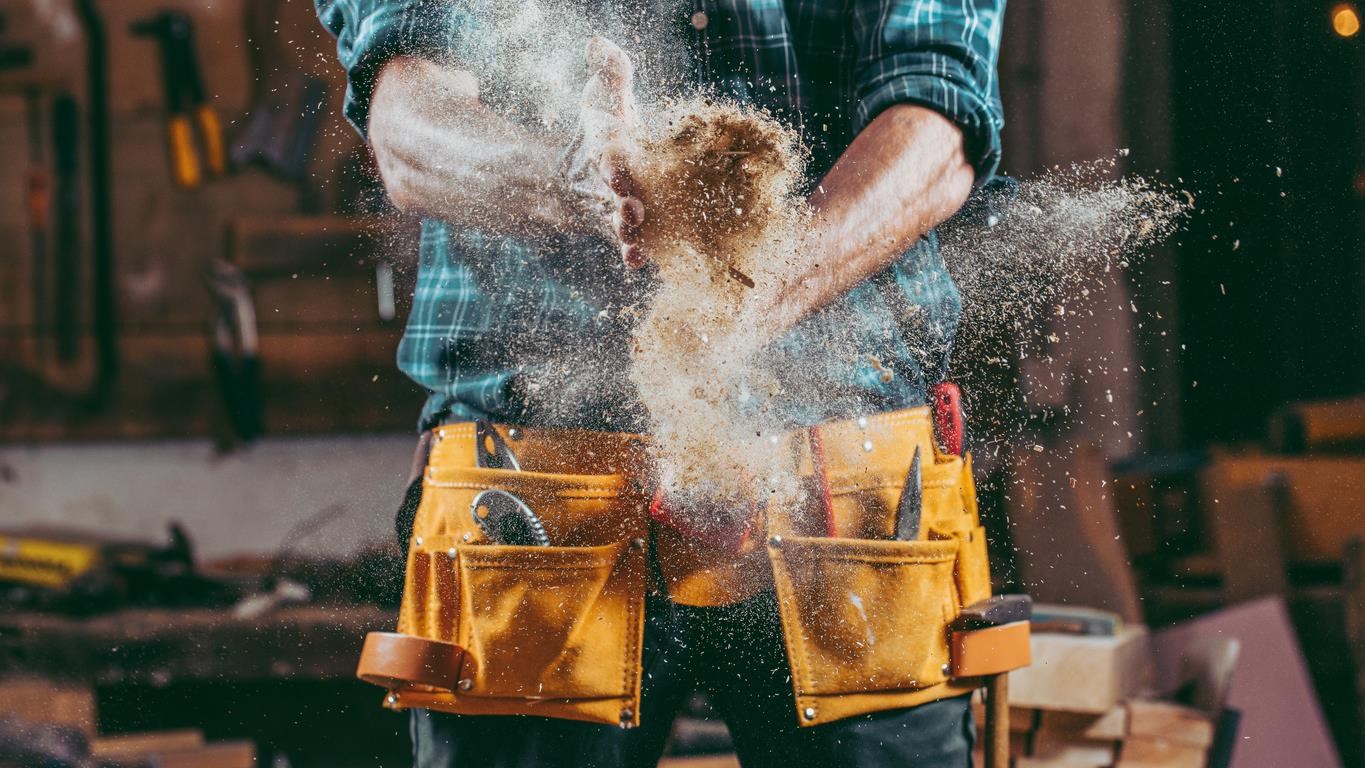
Renovation projects lead to odors, dust, and volatile organic compounds (VOCs) in the surrounding indoor air. This impact on the indoor air quality also has an impact on the people spending time in the space. Whether you’re a construction worker or a resident of a home going through renovations, reducing the dust in the air will help improve the air quality around you.
What is Construction Dust?
We’re all aware of common house dust, but what about construction dust? Construction dust is an all-encompassing term used for the dust that can be found at a construction site. There are three main types of construction dust: silica dust, wood dust, and lower toxicity dusts.
- Silica dust: created when working on silica-containing materials such as brick, concrete, mortar, and sandstone.
- Wood dust: created when working on softwood, hardwood, and wood-based products such as medium-density fiberboard (MDF) and plywood.
- Lower toxicity dust: created when working on other materials containing little to no silica. The most common sources include gypsum, limestone, marble, and dolomite.
How to Reduce Construction Dust
Managing the construction dust in an environment includes taking measures both before and after construction activity. The most effective method for reducing dust is to use a combination of the recommendations listed below.
Changing materials or working methods:
The materials, tools, and work methods used may impact the level of dust created during construction. Depending on the project, there are preventive measures that can be taken to reduce construction dust.
- Use building material sizes that are already fit for the project. This leads to less cutting or preparation of the materials required.
- Silica-free abrasives will reduce the risks to those exposed to the construction site.
- Opt for less powerful tools. High-energy tools like cut-off saws and grit blasters produce a lot of dust in a short amount of time.
- Adapt to different work methods that product less dust. For example, use a nail gun to create holes instead of drilling them.
Controlling levels of dust:
Other than adaptations in materials, tools, and work methods, there are additional tricks and tools that can be used to control the levels of construction dust on a site.
- Used correctly, water suppression can be used to dampen dust clouds. Water should be used to wet material beforehand and for the duration of the activity, at proper levels.
- "On-tool extraction is a type of local exhaust ventilation (LEV) system which is fitted directly onto the tool.” (Health and Safety Executive, HSE) Using on-tool extraction will help to suck up any of the dust being created during the construction work.
- Keep the construction site well contained. The use of plastic barriers and zipper systems will help to keep dust within the contained site.
- Air purifiers help to reduce dust from the air. TruSens Air Purifiers are designed to clean and circulate the air in the room. Dust circulating through the air will be captured in the filter. TruSens Air Purifiers help to control levels of construction dust in the air that has not been suppressed by water or on-tool extraction methods. We also offer a specialty Allergy & Flu Filter that captures 99% of airborne allergens, including dust.
Paint Fumes
Renovation projects may also include painting, leading to paint fumes in the indoor air as well. Paint fumes not only leave a lingering scent, but may host potential risks to those breathing in its chemicals. Learn more on the risks, side effects, and how to stay safe around paint fumes by visiting our Paint Fumes blog.